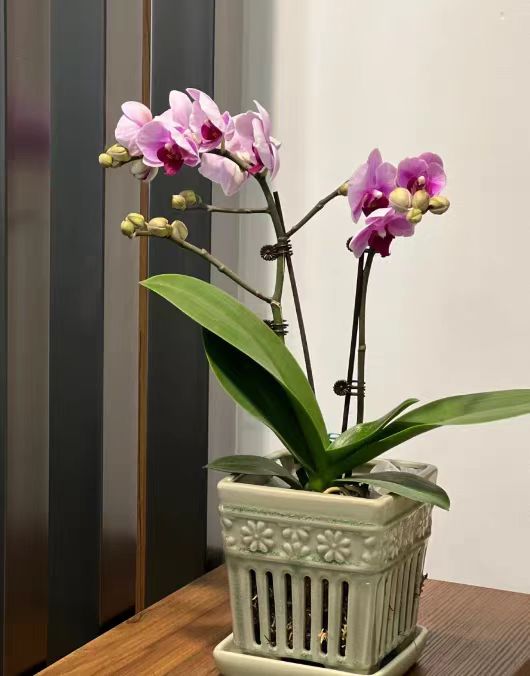In the process of Phalaenopsis cultivation, the health of the roots directly affects the growth and flowering quality of the plant. Understanding in depth whether Phalaenopsis needs root - pruning and whether to disinfect with chlorothalonil after root - pruning helps keep Phalaenopsis in good growth condition.
Let's first talk about whether Phalaenopsis needs root - pruning. Under normal circumstances, Phalaenopsis that is growing healthily with well - developed roots does not need deliberate root - pruning. However, in some special cases, root - pruning is very necessary. For example, when root - rot occurs in Phalaenopsis, root - pruning must be carried out in a timely manner. Excessive watering, poor drainage, or inappropriate planting medium can all lead to root anoxia, which in turn causes rotting. If the rotting part is not cut off at this time, the bacteria will spread rapidly, endangering the entire plant. The roots that have turned black, become soft, and emit an odor are obvious symptoms of rotting. A sharp and disinfected pair of scissors should be used to completely cut off the rotting part until the healthy tissue is exposed.
Also, when the roots of Phalaenopsis are too dense and intertwined in the flowerpot, affecting the growth of new roots and the absorption of nutrients, root - thinning can be appropriately carried out. For example, in the case of Phalaenopsis that has been cultivated for many years without repotting, the roots may fill the flowerpot. At this time, the plant needs to be carefully taken out, the roots combed, and some overly dense and aging roots cut off to make room for the growth of new roots. In addition, if pests and diseases are found on the roots of Phalaenopsis, such as being attacked by root - rot or root - knot nematodes, the diseased roots should be immediately cut off to prevent the spread of pests and diseases.
So, does Phalaenopsis need to be disinfected with chlorothalonil after root - pruning? The answer is yes. Chlorothalonil is a broad - spectrum fungicide that can effectively kill a variety of fungi and bacteria. After root - pruning of Phalaenopsis, wounds will be left on the roots. These wounds are like open doors, providing an opportunity for the invasion of bacteria. Disinfecting with chlorothalonil can form a protective film on the surface of the wounds, preventing the growth and infection of bacteria, and greatly reducing the risk of the plant being infected with diseases.
In specific operation, first dilute chlorothalonil into a solution according to the proportion in the instruction manual. Generally, the dilution ratio is about 800 - 1000 times. Immerse the roots of Phalaenopsis after root - pruning in the diluted chlorothalonil solution for about 15 - 30 minutes. After immersion, take out the Phalaenopsis and place it in a cool and ventilated place to dry. After the water on the surface of the roots evaporates and the wounds are slightly dry, replant it. After such treatment, Phalaenopsis can adapt to the new environment more quickly and grow healthily.
In conclusion, root - pruning and disinfection of Phalaenopsis are important aspects that cannot be ignored in the cultivation process. By correctly judging whether root - pruning is needed and reasonably using chlorothalonil for disinfection after root - pruning, Phalaenopsis can have healthier roots and thus grow more luxuriantly.
Does Phalaenopsis need root - pruning?

Share with
Tagged in :




Leave a Reply